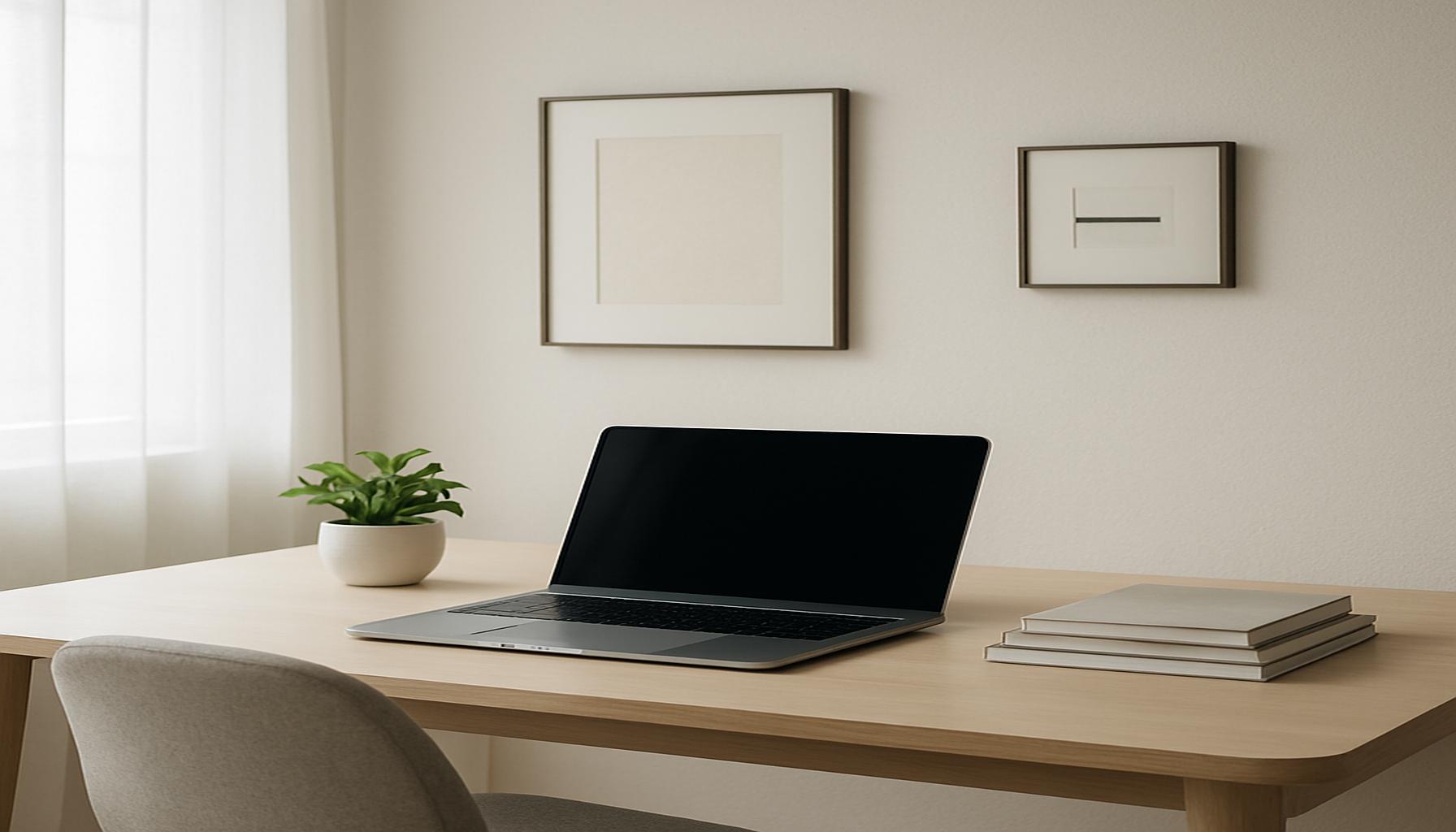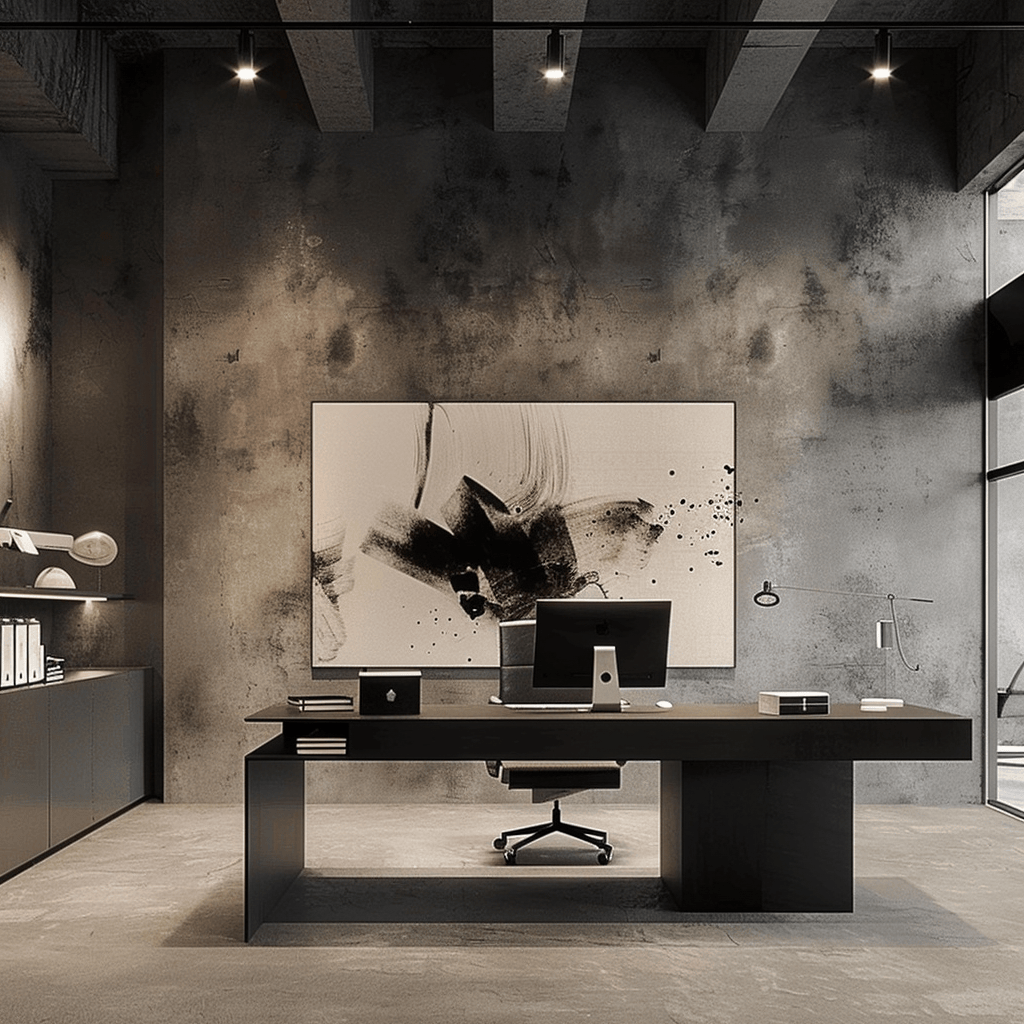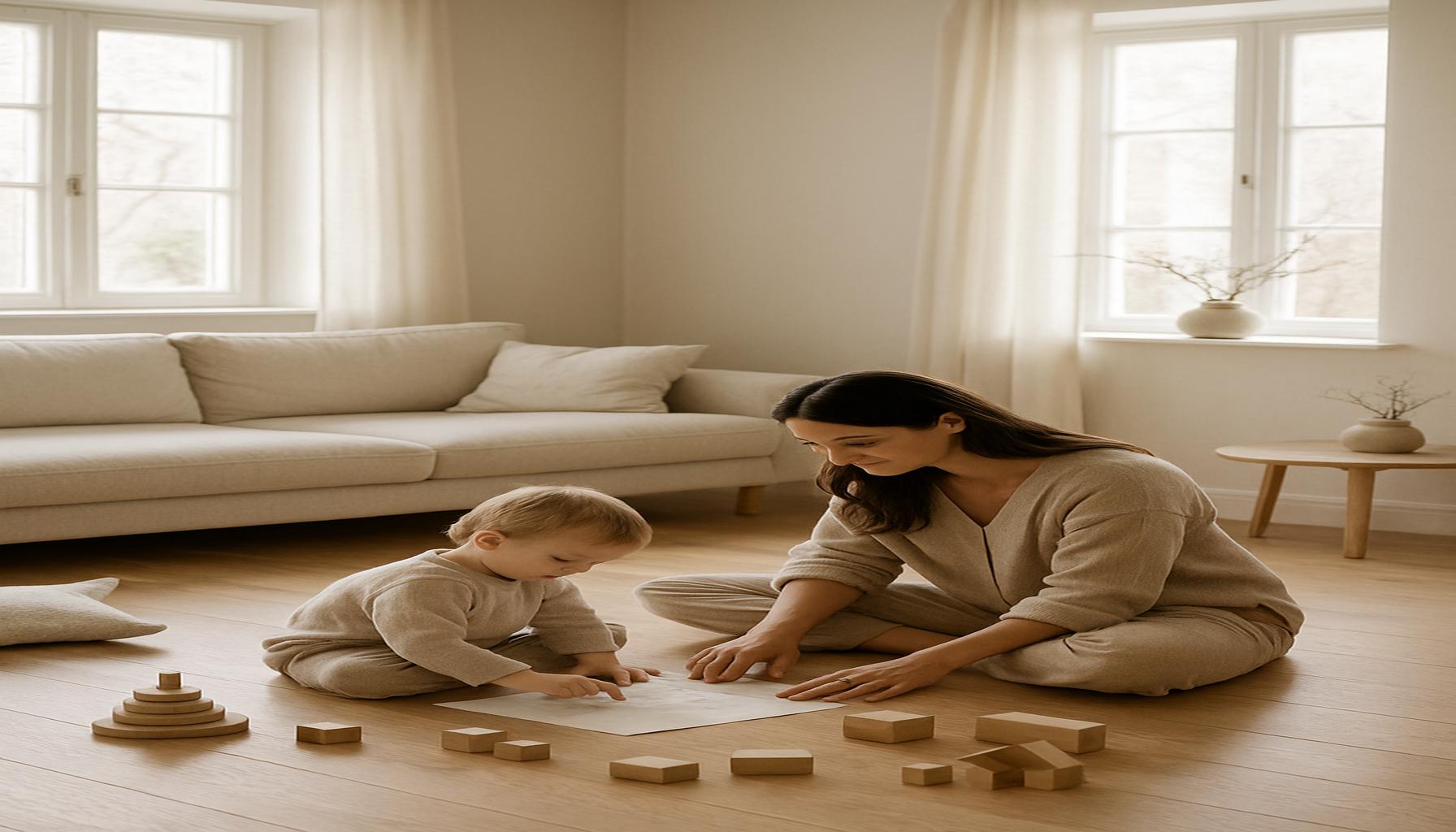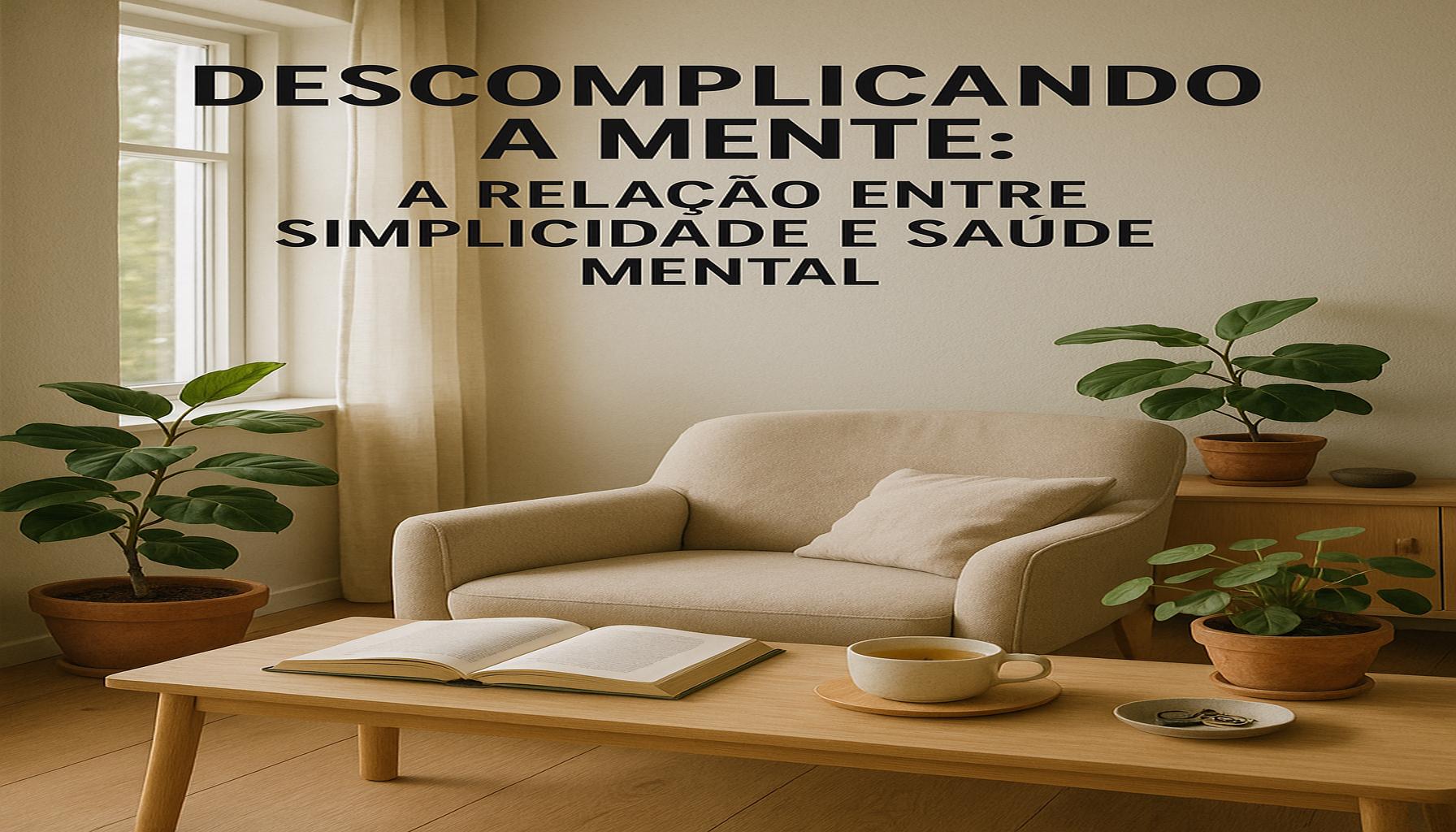Simple Organization Minimalist Workspace Strategies for Success

Embracing Minimalism for a Productive Workspace
In today’s fast-paced world, the importance of a minimalist workspace cannot be overstated. Clutter can cloud our minds, hinder productivity, and create significant stress. By adopting a simpler approach to organization, you can foster a more tranquil environment that enhances focus and creativity.
The Relevance of Minimalism
Minimalism is not just a design aesthetic; it is a lifestyle philosophy that emphasizes simplicity and intentionality. In personal organization, it encourages individuals to prioritize what truly matters in their workspaces. Consequently, this leads to improved efficiency and mental clarity.
A Glimpse into the Top Strategies
To help you create an effective minimalist workspace, we’ve curated a list of the Top 5 strategies that can transform your environment. These practical tips aim to declutter not only your desk but also your mind, enabling you to work smarter, not harder.
Simplicity in Organization: Strategies for a Minimalist Workspace
A minimalist workspace is more than just a design choice; it’s a lifestyle decision that can significantly enhance your working experience. By reducing clutter and focusing on simplicity, a minimalist environment can lead to increased productivity, decreased stress, and improved overall satisfaction. Minimalism invites clarity, allowing individuals to focus on tasks at hand without unnecessary distraction. Below, we explore five effective strategies to help you streamline your workspace and create a more efficient and enjoyable work environment. Let’s dive into these strategies that promise to transform your workspace into a haven of productivity!
5. Declutter Regularly
Decluttering isn’t merely a one-time activity; it is a continuous commitment towards maintaining a minimalist work environment. A cluttered desk often leads to a cluttered mind, where distractions can impede workflow and efficiency. Regular decluttering sessions are essential for maintaining the organization.

- Begin by tackling small areas like your desk or drawers, making the task less overwhelming and more achievable.
- Identify items that are essential for your everyday tasks and eliminate those that are not frequently used.
- Apply the “one-year rule”—if an item hasn’t been used in the past year, consider whether it really belongs in your workspace.
By committing to ongoing decluttering, you deliberately curate a workspace that is both inviting and efficient, creating a barrier against unnecessary distractions and fostering an environment conducive to focus and productivity.
4. Embrace Digital Tools
The digital revolution offers myriad solutions for minimizing physical clutter, providing tools that can streamline processes and enhance collaboration. Transitioning to digital systems allows for a cohesive, organized approach to work that is easily accessible and sustainable.
- Use cloud storage solutions like Google Drive or Dropbox to store files, reducing the need for physical storage space and ensuring that important documents are easily accessible.
- Project management software such as Trello or Asana helps track tasks and projects, facilitating improved workflow management and team collaboration.
- Digital note-taking applications like Evernote or OneNote can replace traditional notebooks, making your ideas and lists accessible from anywhere.
Transitioning to digital solutions greatly reduces the number of physical items in your workspace, enabling you to maintain better organization and focus. This move towards digital not only declutters your desk but also provides seamless integration into an increasingly digital workplace.
3. Implement a “One In, One Out” Rule
The “one in, one out” rule is a simple yet powerful strategy to ensure your workspace remains organized. This principle maintains a balance between what is added and what is removed, preventing accumulation of unnecessary items.
- This rule is applicable to all office items, from supplies and furniture to the latest tech gadgets.
- By following this guideline, you can prevent the build-up of redundant items that contribute to clutter.
- The focus is on maintaining a streamlined and functional environment that prioritizes essential tools.
The “one in, one out” strategy helps in avoiding clutter accumulation, making it easier for you to manage your workspace efficiently and remain focused on tools and resources that directly contribute to your productivity.
2. Create Defined Zones
Spatial organization within your workspace is another key tactic for maintaining minimalism. By creating defined zones, you can allocate specific areas for specific activities, enhancing efficiency and concentration.
- Establish distinct zones for different activities such as focused work, meetings, and creative brainstorming sessions.
- Ensure that tools and resources relevant to each activity are within reach, minimizing the need to disrupt your workflow by searching for necessary items.
- A structured workspace not only boosts focus but also minimizes distractions, enhancing overall productivity.
Defined zones support a workspace with clear boundaries and purpose, allowing for greater engagement with each task. This method is a key strategy in maintaining a minimalist work environment aimed at fostering clarity and concentration.
1. Focus on Quality over Quantity
The pinnacle of creating a minimalist workspace lies in prioritizing quality over quantity. High-quality items not only enhance the visual appeal of your space but also significantly contribute to functionality and comfort.
- Invest in ergonomic furniture to promote good posture and comfort, which in turn can improve productivity and reduce health issues related to poor seating choices.
- Select multifunctional tools that serve multiple purposes, reducing the need for unnecessary equipment and conserving space.
- Choose meaningful décor and items that reflect your personal values and contribute positively to your work environment.
This strategy promotes a cleaner, more organized workspace, which subsequently enhances workflow and motivation by surrounding yourself with items that genuinely serve your needs. Choosing quality fosters a more personal and inspiring work environment, crucial for sustained productivity and satisfaction.
In conclusion, adopting a minimalist approach to workspace organization can significantly transform your work life. By decluttering, utilizing digital resources, implementing strategic rules like “one in, one out,” creating specific activity zones, and focusing on quality, you craft a workspace that supports productivity and creativity. These strategies not only foster an inviting and efficient environment but also prepare you to tackle the demands of an increasingly fast-paced and digitally-oriented work landscape.
| Category | Key Features | Advantages | Disadvantages | Ideal Users |
|---|---|---|---|---|
| Decluttering Techniques | Methods such as the KonMari Method to assess what to keep or discard. | Promotes a sense of clarity and focus; reduces distractions. | It can be emotionally challenging to part with items. | Individuals seeking a streamlined environment. |
| Furniture Choices | Use of multifunctional furniture, such as a desk that doubles as storage. | Maximizes space and minimizes clutter; enhances functionality. | Higher initial investment for quality pieces. | Professionals operating in compact spaces. |
| Digital Organization | Techniques such as cloud storage; minimizing desktop icons. | Increases productivity and accessibility; reduces paper clutter. | Requires regular maintenance and tech-savvy skills. | Everyone, especially those in digital-focused roles. |
| Mindfulness Practices | Incorporation of practices like meditation spaces or breaks for reflection in the workspace. | Enhances mental clarity and reduces stress; fosters creativity. | Can be seen as non-essential by traditionalists. | Individuals who often feel overwhelmed in busy environments. |
In exploring the theme of “Simplicidade na Organização,” applying specific strategies can significantly enhance workspace efficiency while embracing a minimalist ethos. The discussed categories each contribute uniquely towards fostering a simplified yet effective working environment.Decluttering techniques remain a cornerstone for minimalism. Not only do they facilitate physical space transformation, but they also influence mental clarity. Tools such as the KonMari method encourage individuals to engage with their belongings actively. Although parting with items may pose emotional challenges, the resultant feeling of freedom and order often outweighs the discomfort.The choice of furniture shapes the entire working dynamic within an office. Selecting multifunctional pieces can effectively combat clutter, serving both aesthetic and practical purposes. While the initial investment might be higher, the long-term benefits of investing in quality cannot be understated, particularly for those limited by space.Equally crucial is the aspect of digital organization. Leveraging cloud storage and minimizing desktop icons not only reduces physical paper documents that can overwhelm but also facilitates ease of access and reinforced productivity. However, this approach requires users to commit to regular maintenance, ensuring that digital spaces do not devolve into chaos.Finally, integrating mindfulness practices into daily routines can have profound effects on work efficiency. Creating designated spaces for meditation or deliberate breaks can yield enhanced mental clarity and promote innovative thinking. Although these practices may not suit everyone, they serve as a valuable resource for individuals experiencing stress or sensory overload in their work environments. In combining these diverse strategies, one can carve out a workspace that not only embodies simplicity but also maximizes productivity, creating an inviting atmosphere ripe for focus and creativity.
Frequently Asked Questions on Minimalist Workspace Organization
What are the benefits of adopting a minimalist workspace?
The benefits of a minimalist workspace are numerous and can significantly impact both your personal well-being and productivity. By reducing clutter, you create an environment that naturally minimizes distractions. This allows for a more focused work atmosphere. Moreover, a clean and organized space often translates to less stress and anxiety. A study from Princeton University found that physical clutter negatively affects your ability to focus and process information. Embracing minimalism in your workspace can lean into that knowledge, promoting a clearer mind and heightened productivity.
How can I start creating a minimalist workspace?
Embarking on your minimalist journey might seem daunting initially. Start by evaluating your current workspace and identify what is truly necessary for your daily tasks. Begin by de-cluttering: remove items you no longer use or need, and consider donating or recycling them. Limit personal decorations to a few meaningful items. Adopt the one-in, one-out rule; for every new item you bring into your workspace, remove one. This practice ensures you maintain balance and prevent future clutter accumulation. Keep in mind, the goal is to create a functional, serene environment that supports your work.
What should I do with the digital clutter in a minimalist workspace?
In a digital age, minimizing virtual clutter is just as crucial as maintaining a tidy physical space. Start by sorting through your digital files, emails, and applications. Label and organize important documents into different folders. Unsubscribe from unnecessary newsletters and delete redundant or outdated information. Make sure to periodically back up essential files to avoid data loss. Also, consider a minimalist desktop setup; too many icons can be visually overwhelming. Simplifying your digital space ensures a cohesive and efficient workflow, aligning both your physical and digital environments with minimalist principles.
Is a minimalist workspace suitable for everyone?
While the concept of minimalism can be broadly applied, it might not be universally suitable. Some individuals thrive in environments that appear cluttered but are perfectly organized by their own standards. Minimalism is a personal journey and must be tailored to fit individual needs and preferences. The key is to create a space that enhances your productivity and mental well-being. If the minimalist approach aligns with your lifestyle, it can be a powerful tool for achieving a balanced and fulfilling workspace. Adaptability is crucial; what works for one person might not work for another.
Can a minimalist workspace evolve over time?
A minimalist workspace is not a static environment; it can and should evolve as your needs and tasks change. Regularly reassess the items in your workspace to ensure they still serve a purpose. This evolution might include changing to ergonomic furniture as you discover new preferences or adjusting your digital tools. Adapt your space to accommodate new challenges and projects, continually refining what works best for you. Continual adaptation ensures that your minimalism grows with you, maintaining an efficient and inspiring work habitat.
Conclusion
The pursuit of a minimalist workspace reflects a larger trend toward simplicity and efficiency in personal organization. By decluttering our environments, we not only create a more aesthetically pleasing space but also promote mental clarity and productivity. A minimalist workspace allows for a clear focus on tasks at hand, reducing distractions and fostering a sense of calm and control.
Key Takeaways
- Decluttering your workspace and committing to essential items not only simplifies the environment but enhances functionality.
- Incorporating multifunctional furniture can optimize space, offering both versatility and elegance.
- Utilizing digital tools over physical ones, like paper, can help in maintaining an uncluttered, streamlined desk.
- Regular maintenance is crucial to uphold minimalism, ensuring that the philosophy of “less is more” is consistently applied.
- Cultivating mindful purchasing habits limits unnecessary acquisitions, keeping the focus on quality rather than quantity.
Embracing these strategies not only enhances the aesthetic quality of a workspace but also fosters a productive environment. In a world inundated with information and material consumption, the movement toward minimalism counters with simplicity and intentionality. As readers seek to declutter their own spaces, they are encouraged to explore additional resources and methodologies for sustaining minimalism across all areas of their lives. This thoughtful approach to workspace organization underscores the broader benefits of minimalism, offering a pathway to greater personal satisfaction and peace of mind.


